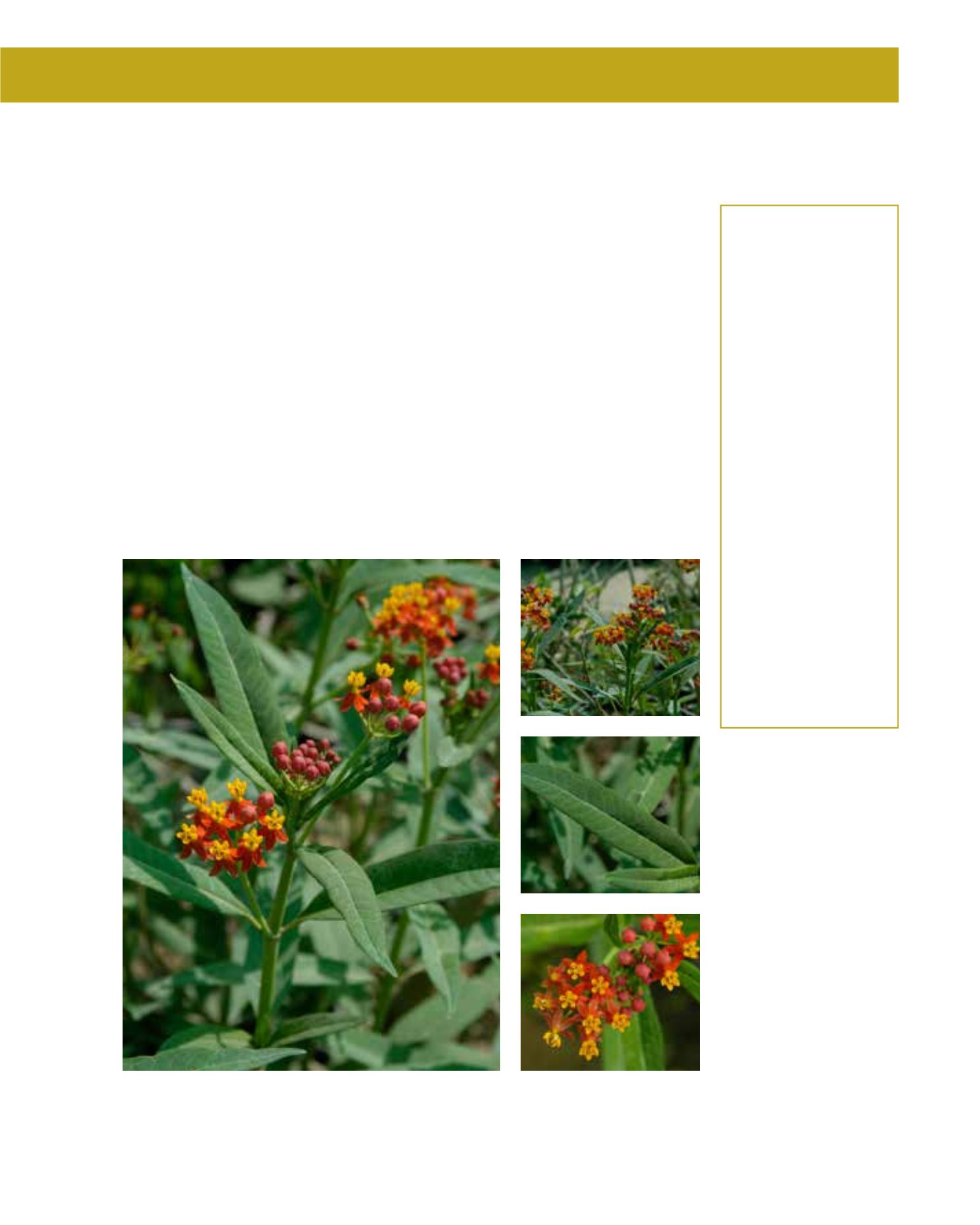

GENERAL
Origin
:
Mediterranean,
sub-tropical
Vigour
:
fairly fast
growing
Humidity
:
semi-arid, semi-
humid, very
humid
Propagation :
sowing and
pricking out,
cuttings
Maintenance :
low
CONDITIONS
Urban climate :
resistant
Dessication :
vulnerable
Stagnant water :
vulnerable
Irrigation
:
medium
Salinity/ppm :
high (3500 ppm)
Hardiness
:
-6°C
SHAPE
Type
:
sub-shrub, shrub
Height
:
1 m
Spread
:
1 m
Foliage
:
evergreen
FLOWER
Colour
:
white
Period
:
May - September
FRUIT
Type of fruit :
star-shaped fruit
Fruit size
:
6 cm - 8 cm
The Milkweed or Silkweed is a small, bushy, evergreen shrub with woody stalks at the base,
growing to a height of 100 cm. It is indigenous to tropical North America and Africa. Silkweed
has umbel flowers both red and yellow in colour that bloom almost the whole year round. It
requires a moist, fertile and well-drained soil and nutrients. A. curassavica prefers a sunny to
a partially shady location. It can withstand frost up to –5°C. The Silkweed takes its name from
its seeds. When the longish slender pods open, dark brown seeds become visible which have
silky hairs upon them. The plant can be propagated by seeds or cuttings of the green branches
or root division. The milky fluid produced in the plant’s stems can cause irritation, and contact
with the eyes should be avoided. This Asclepias is very attractive in private gardens or parks in
mixed borders, or as a high groundcover, because of its attractive appearance in both flower and
seed. It should be planted together with other plants having similar requirements such as regular
irrigation, light and nutrients. Lush, tropical planting themes are, therefore, suitable for the use
of this plant. Pinching the tops after flowering improves blooming and encourages dense growth
from below; otherwise, the plant needs only low maintenance.
58
Asclepias curassavica,
Asclepiadaceae
Milkweed
















